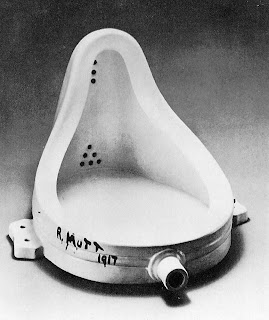INDUSTRIALISATION AND THE BEGINNINGS
OF MODERNISM
Industrialism was highly influenced by the Industrial Revolution. Including mass mechanical production. Inventions like the steam engine and piston engine allowed for things to be produced quicker in mass.
The industrial revolution wasn't all positives, there were some negatives. The industrialism created a state of "Slave Labour".
Photo of Victorian City - Louis Jaques Daguerre
Railways
Cathedrals of the 19th Century became Victorian Railway Stations. "Fast Travel in a Machine on Wheels".
Rain, Steam and Speed - Turner
World Fairs
The World Fairs were the festivals of High machine Capitalism. Countries would come and "show off" their achievements and technological advancements. This would be a chance for the more successful countries to feel more "empowered" than the other countries who were perhaps less industrialised.
The Great Exhibition - 1851
This level of mass production caused the Arts & Crafts to rebel. Long gone were the days where hand crafted items were the only way of production, also gone was the level of personality and effort into production. Items on a conveyor belt are very impersonal and almost "Clone" like. The Arts & Crafts trade took this as an opportunity to sell items that were incredibly hand made with great quality. Although, because of this the only people able to afford these high quality items were the Bourgeoisie (middle - high class).
William Morris Wallpaper Design
The Paris World Fair, the focal point of which was the Eiffel Tower. This represented the 'wondrous' future of wealth and industrialism ahead. The Eiffel Tower became an idol, possibly the sin of people worshipping technology and industrialism instead of Gods.
"Fin De Siecle"
End of The Century
"Belle Epoque"
The Beautiful Era
"Gay Nineties"
Merriment and Frivolity
Henri Toulouse-Lautrec - Moulin Rouge 1891
Leonetto Cappiello - Absinthe Ducros 1901
A significant example of the New Era was the Athens Olympics in 1896.
Deptford 1890. This was the first ever Electrical Power Station.
During this Era Samuel Morse invented the Morse Code
Not long after the Telephone was invented by Alexander Graham Bell.
Another huge technological advancement in this Era was the Television.
ART NOUVEAU
Art Nouveau or Jugenstil was a luxury style that was very popular from 1890 - 1910. This style was concerned with Architecture, Design, Product and Interior Design. A good example of this style that is still around is the Paris Subway Entrance.
An example of some of the arts and crafts that were a part of this movement were the Jewellery by René Lalique.
THE ROOTS OF MODERNISM
The idea of modernity involved a belief in the notion of Historical Progress. In order to make the world modern, they had to create the world all over again. It is hugely situated around "Functional Design".
Deauscher Werkbund (Founded in 1907) wanted to integrate traditional crafts with industrial mass production.
Fritz Helmut Ehmcke - Cigar Box 1914
This was the first ever logo and corporate branding design.
AEG was the first company to employ a designer to create a corporate identity not just for the company, but for its products.
POST WWI (1915 - 1945)
During the first world war, the young and brave soldiers were sent to their deaths by the old. This betrayal led to the slaughter of hundreds of thousands of soldiers all in the name of war.
Most men who survived the war came home to horrendous conditions and would die from a massive Flu epidemic. Many people believe the second world war was caused by the Treaty of Versailles. Germany was then on its knees, and in the early 1930's the german people began to follow a racist and right wing path, later known as the Nazis.
Diagram of right and left wing.
Right Wing:
"law of the jungle" only the successful survive.
Extreme forms of Right Wing are: Racists, Elitists, KKK, BNP, White supremacists.
Capitalism.
Left Wing:
Sharing of resources.
Socialism.
Extreme forms of Left Wing are: Communism, The state rules over everything.
DADA
Dadaism was Anti Art, a reflection of corrupt culture. It was a highly influential form of Art and was a form of Protest.
It is one of the earliest forms of 'Shock Art'.
DE STIJL
De Stijl was a Dutch art movement which sought to create harmony and order through abstract art. Using mostly vertical and horizontal lines paired with primary colours. This movement became very popular.
BAUHAUS
Bauhaus Manifesto
Founded by Walter Gropius, who wanted to create a school where industrial methods were used. This school was responsible for some of the most prestigious artists and designers to date.
FUTURISM
Futurism was an artistic movement that originated in Italy. It emphasised and portrayed speed, power, technology and violence.
Le Corbusier - Modern City
The problem with Le Corbusier's idea of a modern city is that it is too efficient, if this city was to be built, there is no where for people to communicate. It would be a constantly busy society.
THE IRON CURTAIN
The iron curtain. This was the joining of multiple countries to create the USSR which would prevent invasion from the west.
This was a part of the COLD WAR.
M.A.D (Mutually, assured, destruction)
POP ART
Americanisation became huge in the UK. It was the emergence of Youth Culture and highlighted Consumerism, influence of american culture, social/ class mobility and the importance of the media.
Andy Warhol
PUNK





_1891.jpg)







































